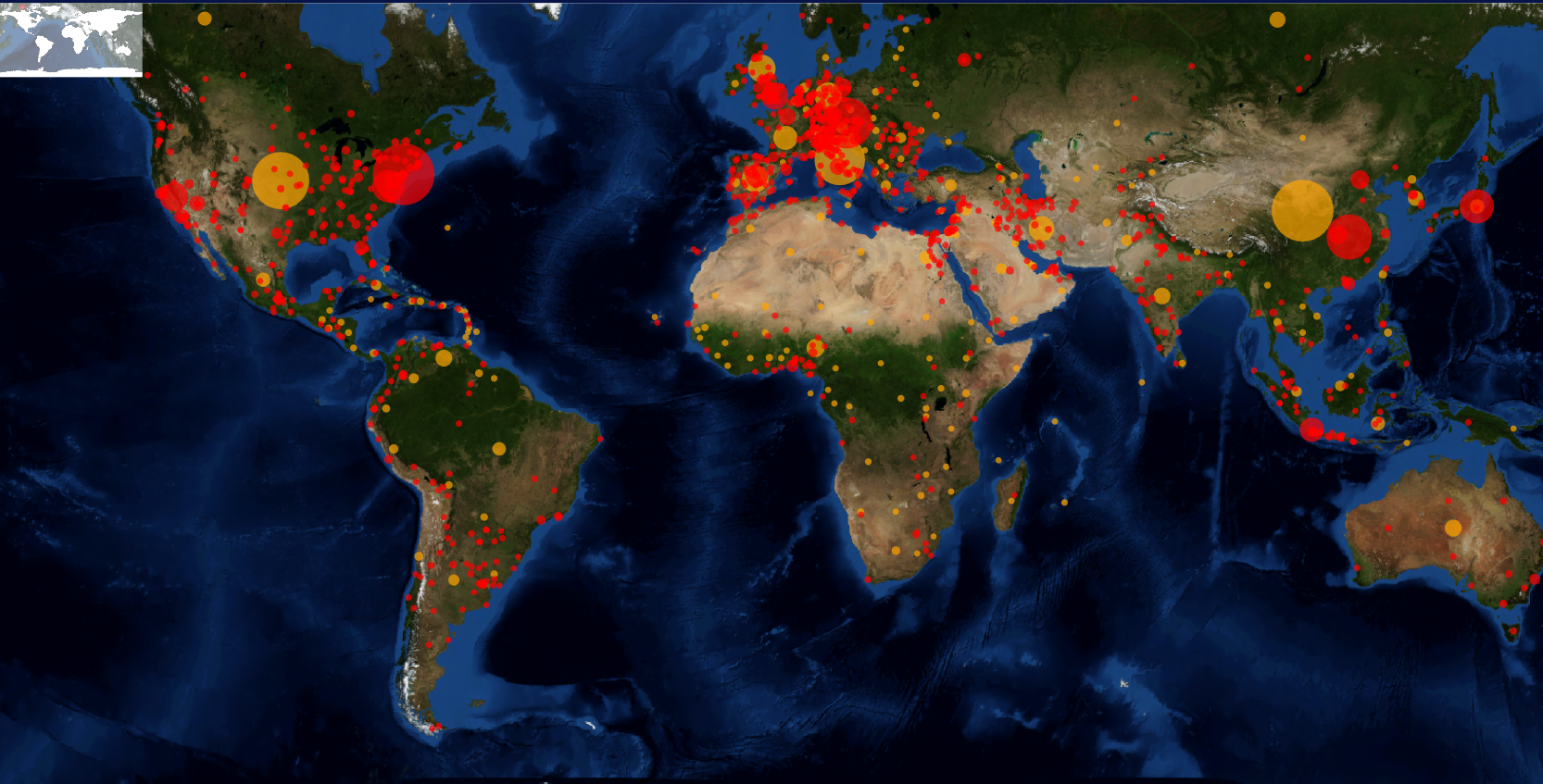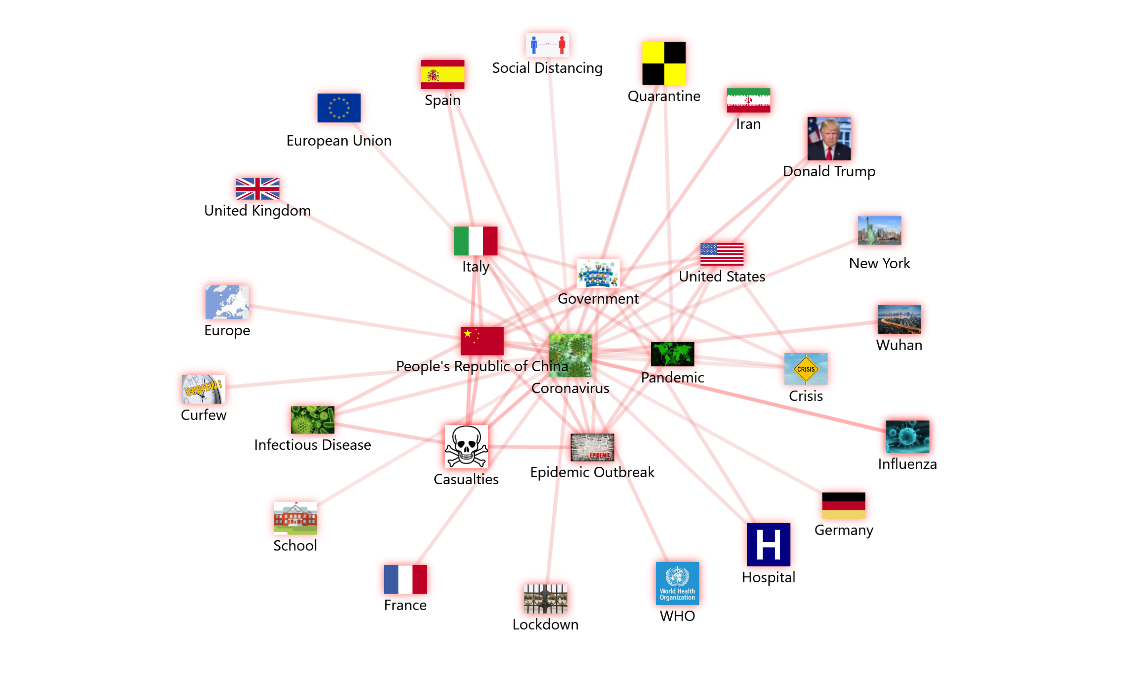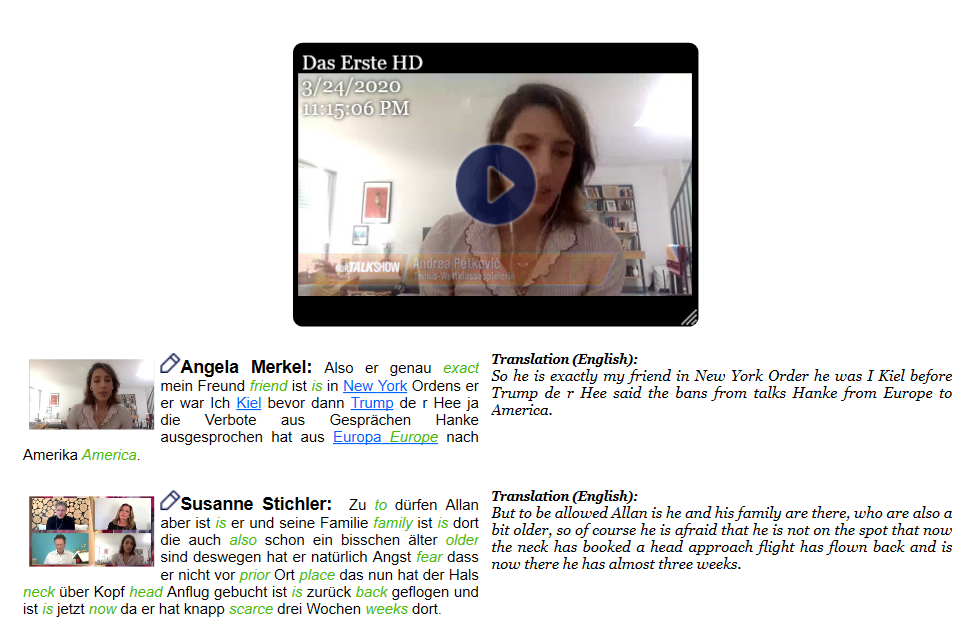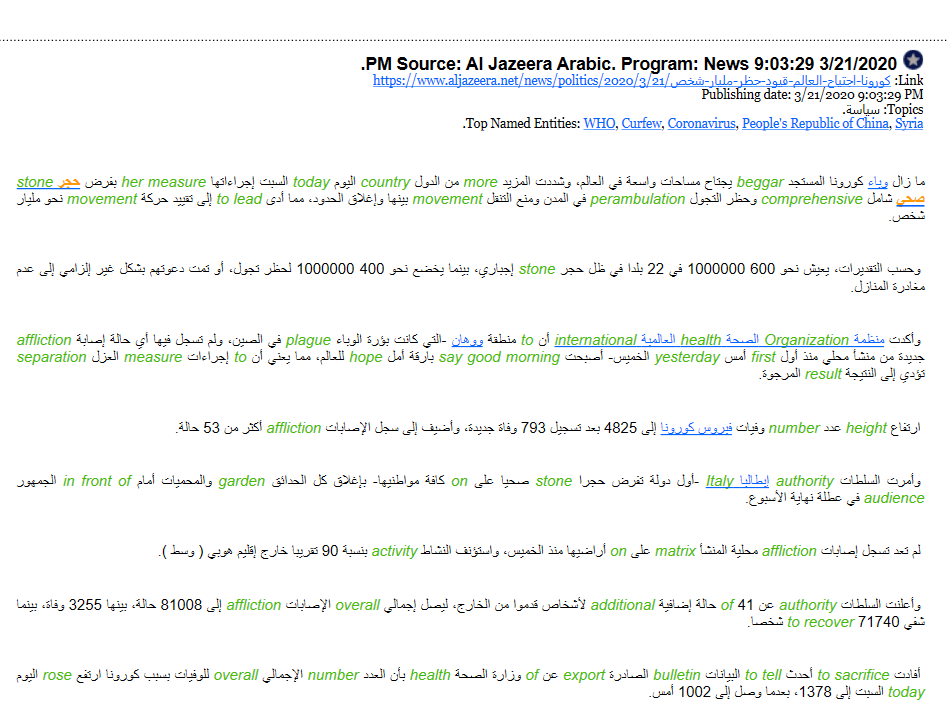The current world population of 7.8 billion people communicate daily in a variety of languages. More than 4.5 billion of us used the internet in the first quarter of 2020,
representing 58.6% of the world’s population. All of these users are constantly reading, creating and sharing information.
It’s no longer just traditional media, such as TV, radio and printed newspapers that generate new information – anyone on the internet can create user-generated content (UGC), mountains of social posts, webpages, blogs, videos and podcasts daily in many languages. There is so much multilingual content out there that the amount of data produced is presenting a challenge to researchers, academics, businesses and governments.
This is why RWS has joined forces with
SAIL LABS, an innovator in the field of speech technology, to provide a state-of-the-art multilingual platform for Open Source Intelligence and Broadcast monitoring. In collaboration with Dominika Betakova, Marketing and Communication Specialist at SAIL LABS, George Bara looks at how the solution integrates RWS's Neural Machine Translation with SAIL LABS Media Mining System to analyze global content across multiple languages for security, finance, health and even pandemic-related purposes (such as COVID-19).
The world under an avalanche of data
Even though data represents the power of knowledge, the volume and variation is hard to keep on top of. It appears in various forms ranging from unstructured data, in text forms collected from social media, to semi-structured metadata and descriptions. The difficulty is how to get to the right reliable data, make conclusions and do all of this in real-time. Big data is often defined in terms of 5 Vs:
- the huge Volume,
- the need for real-time decision making represented by Velocity,
- the Variety of forms in which the data appears,
- the Veracity pointing to the quality of the acquired data, and
- the Value, which is determined by how effectively the subject is able to utilize the power of large volumes of data.
With all this in mind, massive data is the challenge of the new millennium! Luckily, the maturing artificial intelligence (AI) revolution is playing a decisive role in helping us to store, manipulate and extract (the right) knowledge from unstructured information.
Language and images are some of the key aspects in human communication. Multicultural societies are formed in both rural and urban areas and the relations, whether those are inter-personal or between the government and its citizens, have to be established in a multitude of languages. Migration, as a by-product of globalization, represents another challenge, impacting public administration for which the situational awareness has one of the highest priorities, especially in times of crisis.
The commercial sector is no exception. Companies have to evolve in constantly changing environments, in order to serve customers from all parts of the world and across all societies and languages. These customers come with unique needs due to these different cultures, traditions, languages and expectations.
In such a connected world, receiving accurate information is crucial. Although, as companies nowadays deal with different customers all around the world communicating in different languages, it’s never been more important for accurate translation and transcription to understand customers’ needs, attitudes and levels of satisfaction. Understanding is only possible if the digital data is correctly managed and processed.
Critical scenarios
Due to our interconnected world, any event happening anywhere in the world can affect public and private organizations in different parts of the planet at the same time. Therefore, organizations can easily get overloaded by the process of finding and accessing key pieces of information to determine accurate decisions. Likewise, competent reasoning can only be achieved when using the most appropriate sources with suitable processing methods.

An example is the current pandemic outbreak. The novel Coronavirus continues to surge globally, increasing the death toll in different countries. Open Source Intelligence (OSINT) and Automatic Speech Recognition help in monitoring stories in the media around the world, transforming a vast amount of information into actionable intelligence (see above and below charts as examples).

Moreover, mitigation actions against the virus, political instability and economic volatility in bordering countries or far-distant locations affect the prognosis of the crisis in each nation, whereas the possibility to perform media monitoring in different languages concedes expanded situational awareness. As an aid to this process, SAIL LABS Media Mining System makes it easy to monitor OSINT data in 32 languages and dialects from around the globe (see below example).

Some of the key benefits of SAIL LABS Media Mining System for public health include:
- Continuous assessment of media coverage and public opinion in real-time
- Monitoring punctual and permanent health promotion campaigns
- Sentiment Analysis of traditional and social media regarding the perceived impact of the disease and government action
- Event-based surveillance
- Rapid data collection for fast decisions
- Timely reporting mechanisms
- Social media intelligence
- Data extraction from text or audio-visual sources in languages that users do not speak, thanks to automatic speech recognition and machine translation covering 32 languages
- Situational awareness and situational understanding
How other areas benefit
Other fields of expertise can also benefit from OSINT, empowered by the RWS and SAIL LABS solution, such as business intelligence, political campaigns and public opinion research, and critical infrastructure protection. Through the numerous widgets available in the Media Mining System, Open Source information can be explored extensively, expanding situational awareness within critical scenarios. Examples of widgets include a Global Visualization Map, a Relations Graph, a Media Browser, a Trend Graph, a Sentiment Analysis Chart (below), a Social Media Heat Map, and many others.

Therefore, analysts, decision makers, investigators, strategists, researchers or risk managers can all benefit from properly translated, transcribed and accurate information during the assessment of a crisis; making use of one platform that enables access to actionable data obtained from a vast amount of media sources, languages and dialects. The RWS and SAIL LABS system provides the means to make the incredible volume of information searchable and manageable. It can be put into practice in all markets requiring media mining and information processing capabilities (see below).

By providing actionable intelligence and knowledge based on open and publicly available sources (e.g. TV, radio, Internet, press, social media), we're able to offer cutting-edge technologies in areas such as Automatic Speech Recognition, Speaker Identification, Sentiment Analysis, Face Recognition, as well as Named Entity and Topic Detection across multiple languages, geographies and sources.
Multilingual OSINT and broadcast monitoring: how it works
R
Multimedia data from radio, TV or Internet-videos are transcoded and uploaded onto the media storage facility. The audio is then extracted from the multimedia content and, together with corresponding meta-data, is sent to the speech recognition engine (automatic speech recognition, or ASR). The ASR engine converts the audio into a sequence of words, corresponding to the transcript of the audio-content. It segments the audio stream, identifies sections containing speech or background-noise and converts the input audio into a rich transcript in XML, containing the recognized words and some meta-data (timing, confidence). This information is then ingested into the back-end server and ready for retrieval and analysis (it is indexed).
Text that is produced by text-based components, such as the Web-Collector (web pages, feeds), Twitter-Collector (tweets), Email-Collector (E-mails), the import of electronic documents (plain text, .doc, .ppt, .xls, .pdf, .odt, .rtf, .html), and various press agencies (Reuters, AFP, AP, etc.), follow the same enrichment processes.
Thanks to RWS Language, the secure on-premise software designed for large-scale data processing scenarios, all documents – multimedia, audio or textual sources – are translated as they are being processed by the respective components. The components connect to the RWS's Machine Translation Edge software and obtain translations with a minimal time-delay, producing a continuous sequence of text and translations with high quality output. This integrated process of enrichment and translation provides immediate access to information contained in foreign languages.
Currently, the SAIL LABS system is translating content in more than 32 languages with the help of RWS. All of the neural translation engines can be adapted by the customer with its own data, in order to achieve the highest possible translation quality for specific domains and use cases.
This blog has been written by George Bara and Dominika Betakova, a graduate in Political Science of Masaryk University, Czech Republic. Dominika studied Political Marketing and gained international experience at a political consulting agency in California, and through two electoral campaigns in Central and Eastern Europe. Currently, she works as a Marketing and Communications Specialist at SAIL LABS.







